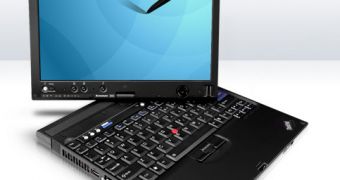Several Lenevo ThinkPad X61 users are complaining about their tablet PC, which appears to generate too much heat in the right palm rest area. The issue isn't related to the tablet PC's graphics chip, as you might presume, but rather to a wireless adapter that is installed under the palm rest. According to the users who have complained about the problem, when the ThinkPad X61 wireless module is activated, it generates a considerable amount of heat, so much so that it can have serious health implications for anyone using the palm rest.
These last few months, it seems that everybody has been talking about little else but NVIDIA's graphics chip failures, but it now turns out that those NVIDIA-powered notebooks are not the only ones with serious factory issues. Lenovo and its X61 Tablet PC are also the cause for some serious problems, which have been reported by concerned users on the company's forum.
User “ColMaki” initiated a forum thread, in which he details the problem he has encountered with his own X61 Tablet PC. As mentioned above, the palm rest area tends to get overheated when the system's wireless module is working. The heat problem is even more serious when a user tries to connect to a faster G or N network. According to this user, the problem, of which Lenovo is already aware, has become all the more severe since the company introduced the Intel Wireless WiFi Link 4965AGN wireless module.
Lenovo has tried to fix the problem using several methods, including installing a second fan, placed under the right palm rest. According to “ColMaki,” the company's support policy included all its customers, but only those that had a WWAN option were lucky enough to have their issue solved. In the meanwhile, another user, which has two X61 Tablet PCs (one with WWAN and one without), has confirmed the reported problem.
The issue has been reported by other users as well, after viewing the initial post, and all have agreed on that Lenovo needs to do something about its products, much like Dell has done with the NVIDIA-enabled notebooks.

 14 DAY TRIAL //
14 DAY TRIAL //